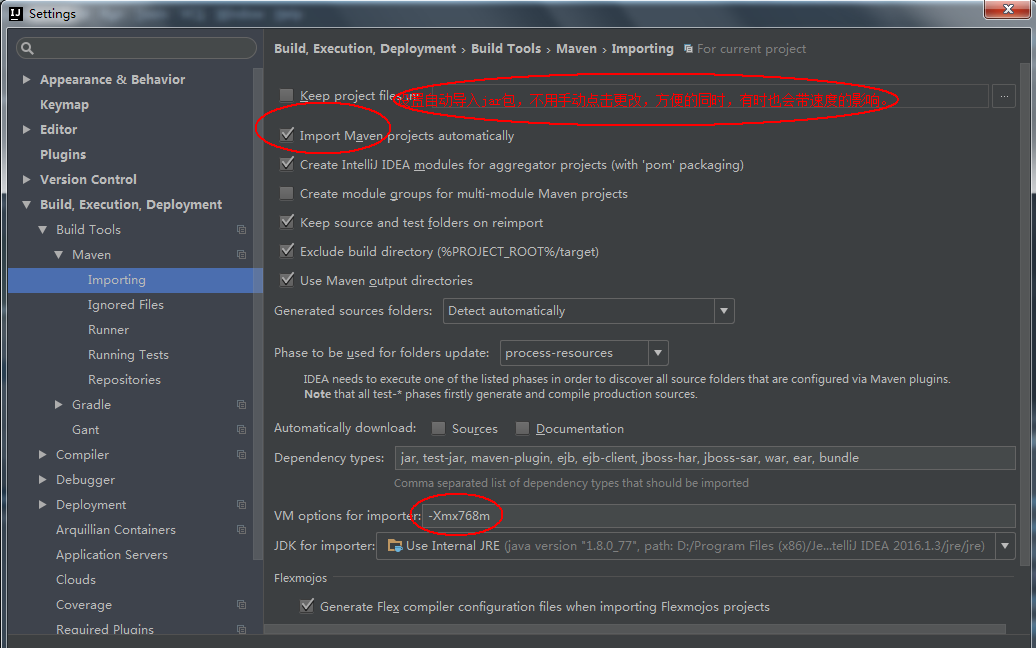这篇文章将为大家详细讲解有关maven配置多仓库的案例分析,小编觉得挺实用的,因此分享给大家做个参考,希望大家阅读完这篇文章后可以有所收获。
刚接触maven就是在公司里配置好的,所以一直以来使用都没毛病,所以一直没有去动这些固有的东西。
但是,后来把公司的电脑拿回家之后,发现有的东西就搞不起来了。原因也看一下就明白了,因为在公司的时候用的是公司的maven私服,所以回家后,用不了也是正常。
但是,真的脱离了公司,自己就不能工作了吗?不可能吧。 难道一下开源工具都必须要依赖于公司的网络? 这明显是不合理的。
那么,就扯出本次文章的意义了,在家里,自然是要公有的maven仓库了,那么,怎样配置maven仓库才能让自己用起来顺心呢?
1. 改掉原有的maven仓库地址,让maven从公网上摘取jar包下载,方便、快捷。
原私有配置示例如下:
<?xml version="1.0" encoding="UTF-8"?>
<settings xmlns="http://maven.apache.org/SETTINGS/1.0.0"
xmlns:xsi="http://www.w3.org/2001/XMLSchema-instance"
xsi:schemaLocation="http://maven.apache.org/SETTINGS/1.0.0 http://maven.apache.org/xsd/settings-1.0.0.xsd">
<!-- localRepository
| The path to the local repository maven will use to store artifacts.
|
| Default: ${user.home}/.m2/repository -->
<localRepository>${user.home}/.m2/repository</localRepository>
<!--pluginGroups></pluginGroups-->
<!--proxies></proxies-->
<servers>
<server>
<id>releases</id>
<username>admin</username>
<password>123</password>
</server>
<server>
<id>snapshots</id>
<username>admin</username>
<password>123</password>
</server>
</servers>
<pluginRepositories>
<pluginRepository>
<id>mypublic</id>
<name>Public</name>
<url>http://test.nexus.com/nexus/content/groups/public/</url>
</pluginRepository>
</pluginRepositories>
<mirrors>
<mirror>
<id>central</id>
<name>internal</name>
<url>http://test.nexus.com/nexus/content/groups/public/</url>
<mirrorOf>central</mirrorOf>
</mirror>
</mirrors>
<profiles>
<profile>
<id>nexus</id>
<!--Enable snapshots for the built in central repo to direct -->
<!--all requests to nexus via the mirror -->
<repositories>
<repository>
<id>central</id>
<url>http://central</url>
<releases><enabled>true</enabled></releases>
<snapshots>
<enabled>true</enabled>
<updatePolicy>always</updatePolicy>
</snapshots>
</repository>
</repositories>
<pluginRepositories>
<pluginRepository>
<id>central</id>
<url>http://central</url>
<releases><enabled>true</enabled></releases>
<snapshots><enabled>true</enabled></snapshots>
</pluginRepository>
</pluginRepositories>
</profile>
</profiles>
<activeProfiles>
<!--make the profile active all the time -->
<activeProfile>nexus</activeProfile>
</activeProfiles>
</settings>如果想直接把私有的地方干掉,那么,这是最快的,直接把mirror的url改掉就行了,如:
<mirrors>
<mirror>
<id>central</id>
<name>internal</name>
<url>http://maven.aliyun.com/nexus/content/groups/public/</url>
<!-- <url>http://test.nexus.com/nexus/content/groups/public/</url> -->
<mirrorOf>central</mirrorOf>
</mirror>
</mirrors>当然了,到需要的地方,再把这个地址改回来就可以了,这可能是改动最小的方法了。但是也很恼火的一种配置方式,因为你要不时地记得切换(谁有那闲心)!!!
2. 添加一个类似结构的仓库配置,这样的话就不切来切去的了,一劳永逸。
相当于添加了多仓库,如下:
<mirrors>
<!-- 再添加一个mirror, 注意mirrorsOf 为 * -->
<mirror>
<id>alimaven</id>
<name>aliyun maven</name>
<url>http://maven.aliyun.com/nexus/content/groups/public/</url>
<mirrorOf>*</mirrorOf>
</mirror>
</mirrors>
<repositories>
<!-- 添加一个 repository -->
<repository>
<id>alimaven</id>
<url>http://alimaven</url>
<releases><enabled>true</enabled></releases>
<snapshots>
<enabled>true</enabled>
<updatePolicy>always</updatePolicy>
</snapshots>
</repository>
</repositories>这样的话,就不用再切换了。但是,这会导致一种情况,在某环境不可用时,maven下载jar将会很慢,严重影响心情,所以,其实是不建议这么干的。
3. 按照最简单的方式,新增一个仓库地址,随时切换。
不用去添加mirror了,直接以url的形式,配置到reponsitory里即可,如下:
<repository>
<!-- 直接添加一个 repository,在 activeProfiles 里加上此id 即可 -->
<id>repo1</id>
<name>org.maven.repo1</name>
<layout>default</layout>
<url>https://repo1.maven.org/</url>
<snapshots>
<enabled>false</enabled>
</snapshots>
</repository><activeProfiles> <activeProfile>nexus</activeProfile> <!-- 添加此属性,以便激活repo1的配置 --> <activeProfile>repo1</activeProfile> </activeProfiles>
这样,既不影响原来的结构,也不影响现在使用,在家的时候,可以将私有仓库注释掉,以提高访问速度。
注意: 最后一个 activeProfiles 的属性是必须的,否则你可能发现你改了配置,然而并没有什么卵用!
<activeProfiles> <!-- 放心,此处的 nexus 是多个仓库的配置 --> <activeProfile>nexus</activeProfile> </activeProfiles>
4. 无法拉取包的困惑?你可能发现,你的maven无法拉取 SNAPSHOT 包,然而包明明就在那里!
是的,出于安全的考虑,maven 默认是不会去使用 snapshot 包的,所以,如果你有需要使用 snapshot 包(很多公司可能大量使用),那么你就需要配置 SNAPSHOT 为允许了!
<repository>
<id>central</id>
<url>http://central</url>
<releases>
<enabled>true</enabled>
</releases>
<!-- 如下开启 snapshots 功能 -->
<snapshots>
<enabled>true</enabled>
<updatePolicy>always</updatePolicy>
</snapshots>
</repository>5.一个完整的配置样例参考
前面说的基本是从解决问题的思路去讲解,可能还是不够形象,或者每个人的理解总是有些差异,下面来一个完整的配置参考。你可以在这上面继续任意发挥:
<?xml version="1.0" encoding="UTF-8"?>
<settings xmlns="http://maven.apache.org/SETTINGS/1.0.0"
xmlns:xsi="http://www.w3.org/2001/XMLSchema-instance"
xsi:schemaLocation="http://maven.apache.org/SETTINGS/1.0.0 http://maven.apache.org/xsd/settings-1.0.0.xsd">
<localRepository>${user.home}/.m2/repository</localRepository>
<servers>
<!-- 账号信息保留,私服使用 -->
<server>
<id>sec@public-snapshots</id>
<username>snapshot_user</username>
<password>snapshot123</password>
</server>
<server>
<id>mirror-sec</id>
<username>snapshot_user</username>
<password>snapshot123</password>
</server>
</servers>
<!-- 注释掉该mirror 配置项 -->
<!-- <mirrors>
<mirror>
<id>mirror-sec</id>
<mirrorOf>sec@public-snapshots,mirror-sec</mirrorOf>
<url>http://maven.sec-ins.com.cn/repository/maven-public/</url>
</mirror>
</mirrors>
-->
<profiles>
<profile>
<id>sec</id>
<!-- 注释掉该默认激活,统一在 activeProfiles 中配置-->
<!-- <activation>
<activeByDefault>true</activeByDefault>
</activation> -->
<repositories>
<!-- 直接添加一个 repository, 运行maven更新时,就会先尝试使用该repo进行拉取了
可添加任意多个仓库,但如果网络不通,这样会导致很长时间的切换重试,可在ide中查看maven正在尝试哪个repository
-->
<repository>
<id>repo1</id>
<name>org.maven.repo1</name>
<layout>default</layout>
<url>https://repo1.maven.org/</url>
<!-- <url>http://maven.aliyun.com/nexus/content/groups/public</url> -->
<snapshots>
<enabled>false</enabled>
</snapshots>
</repository>
<!-- 公司的配置保留,添加自定义的仓库即可 -->
<repository>
<id>sec@public-snapshots</id>
<name>sec-snapshots</name>
<url>http://maven.sec-ins.com.cn/repository/maven-public</url>
<releases>
<enabled>true</enabled>
<updatePolicy>always</updatePolicy>
<checksumPolicy>warn</checksumPolicy>
</releases>
<snapshots>
<enabled>true</enabled>
</snapshots>
</repository>
</repositories>
</profile>
<!-- 注释掉该plugin 配置 -->
<!-- <pluginRepositories>
<pluginRepository>
<id>sec@public-snapshots</id>
<name>sec_plugin</name>
<url>http://maven.sec-ins.com.cn/repository/maven-public</url>
<releases>
<enabled>true</enabled>
<updatePolicy>always</updatePolicy>
<checksumPolicy>warn</checksumPolicy>
</releases>
<snapshots>
<enabled>true</enabled>
</snapshots>
</pluginRepository>
</pluginRepositories>
-->
<!-- 你也可以另开一个 profile, 保存自定义的 repositories, 在 activeProfiles 里加上此id 即可遍历以下 repository -->
<profile>
<id>my-profile</id>
<repositories>
<repository>
<id>alirepo1</id>
<name>org.maven.repo1</name>
<layout>default</layout>
<!-- <url>https://repo1.maven.org/</url> -->
<url>http://maven.aliyun.com/nexus/content/groups/public</url>
<snapshots>
<enabled>false</enabled>
</snapshots>
</repository>
<repository>
<id>spring-milestones</id>
<name>Spring Milestones</name>
<url>https://repo.spring.io/milestone</url>
<snapshots>
<enabled>false</enabled>
</snapshots>
</repository>
<repository>
<id>repository.springframework.maven.release</id>
<name>Spring Framework Maven Release Repository</name>
<url>http://maven.springframework.org/milestone/</url>
</repository>
<repository>
<id>org.springframework</id>
<url> http://maven.springframework.org/snapshot</url>
</repository>
<repository>
<id>spring-milestone</id>
<name>Spring Maven MILESTONE Repository</name>
<url>http://repo.spring.io/libs-milestone</url>
</repository>
<repository>
<id>spring-release</id>
<name>Spring Maven RELEASE Repository</name>
<url>http://repo.spring.io/libs-release</url>
</repository>
</repositories>
</profile>
</profiles>
<activeProfiles>
<!-- 添加此属性,需要激活自定义的repo 的profile配置 -->
<activeProfile>sec</activeProfile>
<activeProfile>my-profile</activeProfile>
</activeProfiles>
</settings>6. 另附一个idea maven配置的方法


maven作为基础辅助工具,虽不需去深入的理解,也没有高深的技巧,但是作为没有处理过几个相关问题的同学,还是很有必要了解的。
关于maven配置多仓库的案例分析就分享到这里了,希望以上内容可以对大家有一定的帮助,可以学到更多知识。如果觉得文章不错,可以把它分享出去让更多的人看到。
免责声明:本站发布的内容(图片、视频和文字)以原创、转载和分享为主,文章观点不代表本网站立场,如果涉及侵权请联系站长邮箱:is@yisu.com进行举报,并提供相关证据,一经查实,将立刻删除涉嫌侵权内容。